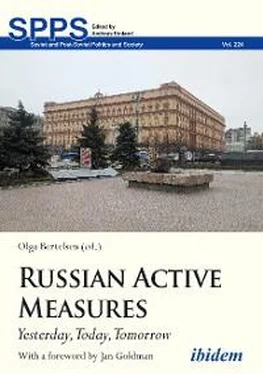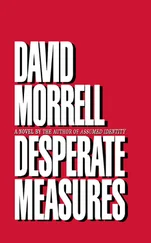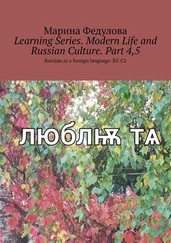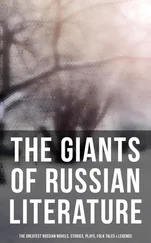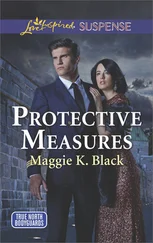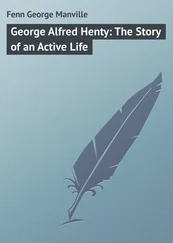41HDA SBU, f. 16, op. 1, spr. 1011, ark. 85–86. The third part of Gorky’s Old Izergil entitled “The Flaming Heart of Danko” was an obligatory reading in Russian literature classes in Soviet high schools. Writing the report, a KGB officer, by mistake, presented the British rock band “The Animals” as American. (“Amerikanskii modernistskii ansambl ‘Zhivotnyie’” in the original, ark. 86).
42HDA SBU, f. 16, op. 1, spr. 1011, ark. 87–88; f. 16, op. 1, spr. 993, ark. 358–61; f. 16, op. 1, spr. 1015, ark. 325.
43HDA SBU, f. 16, op. 1, spr. 1011, ark. 88–89.
44On Pokalchuk, see HDA SBU, f. 16, op. 1, spr. 1095, ark. 182–85; for more on the hippies’ engagement with the Orthodox Church in Kupiansk, see HDA SBU, f. 16, op. 1, spr. 1089, ark. 321; for a report about the substantial growth of Krishnaites in Ukraine, see HDA SBU, f. 16, op. 1, spr. 1175, ark. 132–34, and f. 16, op. 1, spr. 1184, ark. 36–37. See also DADO, f. 19, op. 60, spr. 85, ark. 7, 17, and Zhuk, Rock and Roll , 200, 201, 205. Some police officers reported that the hippies had publicly displayed various religious symbols, such as Christian crosses and icons, as well as portraits of Krishna and Buddha.
45HDA SBU, f. 16, op. 1, spr. 1162, ark. 126.
46HDA SBU, f. 16, op. 1, spr. 1162, ark. 128.
47HDA SBU, f. 16, op. 1, spr. 1249, ark. 147.
48HDA SBU, f. 16, op. 1, spr. 1011, ark. 90. KGB officers, who studied local hippies, distanced themselves from the “ideological nonsense” of Komsomol periodicals, which wrote that the “American hippies were a satanic sect embracing a mixture of palmistry, astrology, and black magic, and that the hippies were looking for a virgin girl for their devilish black mass ritual and could not find such girls among themselves.” See the author’s interview with Stepan Ivanovich T., a retired KGB officer, 30 January 2019, Kyiv, Ukraine. He referred to Mykola Solomatin, “Zhertvy chornoi magii,” Ranok, no. 1, January 1974, pp. 18–19.
49HDA SBU, f. 16, op. 1, spr. 1015, ark. 324–25.
50HDA SBU, f. 16, op. 1, spr. 1015, ark. 323.
51Zhuk, Rock and Roll , 102, 103, 170–71, 267–79.
52HDA SBU, f. 16, op. 1, spr. 1200, ark. 68; the author’s interview with Stepan Ivanovich T., a retired KGB officer, 30 January 2019, Kyiv, Ukraine.
53HDA SBU, f. 16, op. 1, spr. 1200, ark. 68.
54 Squadrismo is an Italian term for the Italian fascist movement, based on armed squads and led by Benito Mussolini. See Roberta Suzzi Valli, “The Myth of Squadrismo in the Fascist Regime,” Journal of Contemporary History 35, no. 35 (2000): 131–50.
55The author’s interview with Stepan K., a retired KGB/SBU officer, 2 February 2019, Kyiv, Ukraine.
56HDA SBU, f. 16, op. 1, spr. 1200, ark. 68.
57Ibid.
58The author’s interview with Stepan K., retired SBU/KGB officer, 2 February 2019, Kyiv, Ukraine. For more details about these Italian films, see Zhuk, Rock and Roll , 145–48.
59Artemy Troitsky, Back in the USSR: The True Story of Rock in Russia (London: Omnibus Press, 1987), 42–43.
60Even during Gorbachev’s perestroika , local journalists and KGB officials still employed these materials. They reprinted some of the British punks’ declarations for Komsomol ideologists’ needs and tasks. See L. Gamolsky, N. Efremenko, and V. Inshakov, Na barrikadakh sovesti: Ocherki, razmyshleniia, interviu (Dnipropetrovsk: Politizdat, 1988), 139. The author’s interview with Igor T., a KGB officer, 15 May 1991, Dnipropetrovsk, Ukraine; the author’s interview with Mikhail Suvorov, 1 June 1991, Dnipropetrovsk, Ukraine. For a discussion about similar practices in Hungary, see Anna Szemere, Up from the Underground: The Culture of Rock Music in Postsocialist Hungary (University Park, PA: The Pennsylvania State University Press, 2001).
61The author’s interview with Mikhail Suvorov, 1 June 1991, Dnipropetrovsk, Ukraine; see also the Communist Party veteran Nadezhda Sarana’s open letter entitled “We Declare War against Everybody Who Interferes in Our Lives and Work!” [ Boi tem, kto meshaet nam stroit i zhit !], denouncing the local punks, and A. Liamina and L. Gamolskii, “Grazhdaninom byt obiazan” about the 22 December 1982 public trial in Dnipropetrovsk in Dnepr vechernii, 23 December 1982, p. 3. Compare these texts with that of the activists’ reaction in “Iz vystuplenii uchastnikov sobraniia,” in Dnepr vechernii, 23 December 1982, p. 3. See also L. Vasilieva, “Takim ne mesto sredi nas!” Dnepr vechernii, 10 January 1983, p. 3.
62Heavy metal music, known as “metal,” is a genre of rock music that emerged in the late 1960s and further developed in the early 1970s in the United Kingdom and the United States.
63Gamolsky, Efremenko, and Inshakov, Na barrikadakh sovesti, 133.
64Ibid.
65Ibid. , 134. In 1984–1985, some university students suffered persecutions for having posters of the British band Black Sabbath. The author’s interview with Oleksandr Beznosov, 19 July 2008, the Department of History, Dnipropetrovsk University, Dnipropetrovsk, Ukraine.
66Gamolsky, Efremenko, and Inshakov, 135–36.
67The journalist continued: “Let’s think again! There is no justification for collecting the Nazi regalia! Many people in the West understand this. Leon Rappoport, an American professor from the University of Kansas, was absolutely right, when he sincerely declared: ‘Collecting Nazi relics is certainly one of the forms of fascist propaganda.’” See Gamolsky, Efremenko, and Inshakov, 135–36; the author’s interview with Mikhail Suvorov, 1 June 1991, Dnipropetrovsk, Ukraine.
68Yu. Lystopad, “Ideolohichna borotba i molod (Notatky z oblasnoi naukovo-praktychnoi konferentsii),” Prapor iunosti, 17 December 1983, p. 2.
69Gamolsky, Efremenko, and Inshakov, 137.
70For more about this film and similar cases during perestroika , see Richard Stites, Russian Popular Culture: Entertainment and Society Since 1900 (New York: Cambridge University Press, 1992), 152, 168, 170; interview with Ihor T., a retired KGB officer, 15 May 1991, Dnipropetrovsk, Ukraine; Ihor T. also mentioned the Italian film’s influences on Ukraine’s youth.
71Tsentralnyi Derzhavnyi Arkhiv Hromadskykh Obiednan Ukrainy (TsDAHOU), f. 7, op. 20, spr. 3087, ark. 43 (“Otchet Dnepropetrovskogo OK LKSMU ot 23 dekabria 1983 g.”).
72HDA SBU, f. 16, op. 1, spr. 1197, ark. 30–31, 68–69; spr. 1200, ark. 236–237; interview with Ihor T., a retired KGB officer, 15 May 1991, Dnipropetrovsk, Ukraine.
73On how Soviet young consumers used films about the Italian mafia by Damiano Damiani to criticize the USSR as a mafia state, see Sergei I. Zhuk, “‘The Disco Mafia’ and ‘Komsomol Capitalism’ in Soviet Ukraine during Late Socialism,” in Material Culture in Russia and the USSR: Things, Values, Identities , ed. Graham H. Roberts (London and Oxford: Bloomsbury Publishing, 2017), 173–95.
74HDA SBU, f. 16, op. 1, spr. 1192, ark. 68–69; f. 16, op. 1, spr. 1199, ark. 49.
Конец ознакомительного фрагмента.
Текст предоставлен ООО «ЛитРес».
Прочитайте эту книгу целиком, купив полную легальную версию на ЛитРес.
Безопасно оплатить книгу можно банковской картой Visa, MasterCard, Maestro, со счета мобильного телефона, с платежного терминала, в салоне МТС или Связной, через PayPal, WebMoney, Яндекс.Деньги, QIWI Кошелек, бонусными картами или другим удобным Вам способом.
